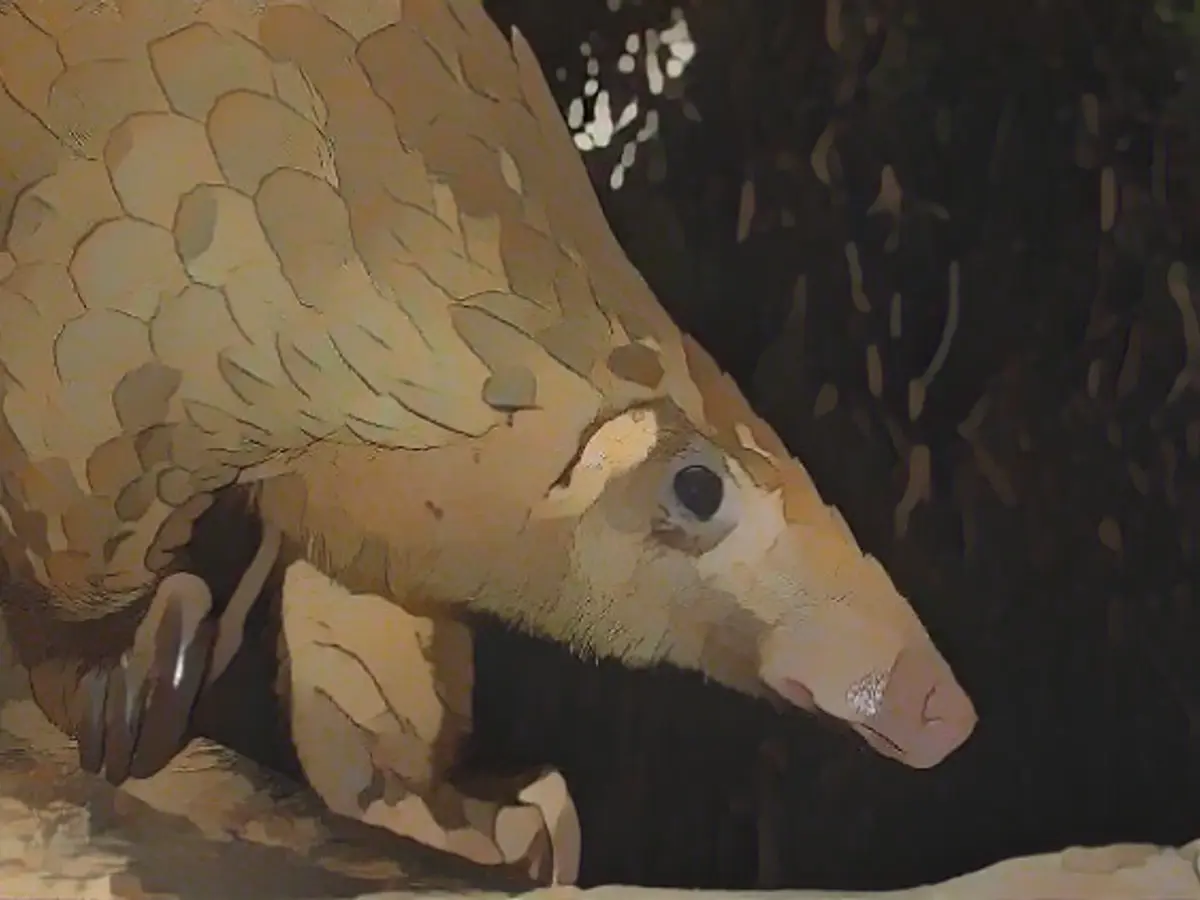Genes reveal routes of pangolin smugglers
The white-bellied pangolin is the most frequently poached animal species in the world. By comparing genetic analyses of wild and confiscated animals, researchers can say exactly which region the animals originally came from. The test is intended to keep poaching under control.
Genetic analyses of hundreds of pangolins have uncovered smuggling routes for these endangered animals. They show from their origin in African regions to their destination in Asian countries, where pangolins are caught, collected, shipped and consumed. The work of a large international team led by Jen Tinsman from the University of California has been published in the journal "Science". The technology offers new opportunities to monitor pangolin poaching in near real time, enabling more targeted and effective measures to combat the trade.
According to the researchers, the white-bellied pangolin(Phataginus tricuspis) is the most poached mammal in the world of all wild animal species. It is found in West and Central Africa, from Guinea to Zambia.
The researchers determined gene sequences from 111 samples taken from wild pangolin populations at various locations in Africa. They also carried out genetic analyses of 643 scales confiscated in Hong Kong between 2012 and 2018. These came from 32 shipments that had arrived in Hong Kong via various trade routes and were confiscated by authorities. "These seizures had a total weight of 38 tons and represented an estimated minimum of 105,447 dead pangolins," the researchers write.
Transshipment sites and places of origin can be determined
The vast majority of the 643 genetically typed pangolins came from two regions in Africa: from western Cameroon near the border with Nigeria and from the southern border of Cameroon with Equatorial Guinea. Over time, the focus of poaching had shifted from West to Central Africa. "Recently, the southern border of Cameroon has become a site of intense poaching," the researchers write. Although many confiscated pangolins originated from southern Cameroon, the vast majority of shipments reached Asia via Nigeria, indicating that the country serves as an important transshipment point for pangolin smuggling.
Hong Kong is one of the transit points where the pangolins are hardly used, said Tinsman. According to her, further data from law enforcement agencies indicate that such pangolins end up mainly in southeastern provinces of China, particularly Guangdong and Guangxi.
Assumption of health-promoting properties
Pangolins are in great demand in Asia, as people assume - without scientific evidence - that their scales have medicinal properties, the team writes. This is particularly true in China. After the populations of Asian pangolin species declined, smugglers began importing African animals.
"We have shared our methods and results with researchers, conservation experts and ministry officials in Cameroon," Tinsman told Deutsche Presse-Agentur. "We hope that now that the test is public, we can get it into the hands of law enforcement officials in places like Hong Kong, Nigeria and Singapore, where many pangolin sheds are actually being confiscated."
Test provides data within a week
Government wildlife laboratories could - if they use the test - monitor the trade in pangolins in near real time. "It takes less than a week from receiving a pangolin to extracting DNA, running the test and getting a result," Tinsman said. "We hope that our work will lead to continuous monitoring of poaching hotspots in the future so that anti-poaching measures can be deployed where they are most needed."
During the coronavirus pandemic, the trade in pangolin products has fallen sharply. It remains to be seen how the market will now develop. "China is the main market for these pangolins, and it has only recently reopened its entire trade to the same extent as before the pandemic," said Tinsman.
Protection for all pangolin species
All eight pangolin species are at the highest level of protection under the Washington Convention on International Trade in Endangered Species of Wild Fauna and Flora. According to the 2016 decision, any commercial, international trade in the animals or products made from them is therefore prohibited.
The white-bellied pangolin is classified as endangered on the Red List of the International Union for Conservation of Nature (IUCN). The cause of the decline is a combination of forest loss, increasing exploitation of tropical African pangolins for local use and consumption and the emergence of the intercontinental trade in African pangolins since around 2008.
The IUCN also expects a decline in the future: there is increasing Chinese investment in West and Central Africa, which obviously facilitates illegal trade. In addition, the population of sub-Saharan Africa is expected to continue to rise, which will increase the pressure on this pangolin species.
Read also:
- This will change in December
- Attacks on ships in the Red Sea: shipping companies avoid important trade route
- German activists speak out in Dubai on suffering in Israel and the Gaza Strip
- Despite UN vote: fighting between Israel and Hamas in the Gaza Strip continues
- The discovery of smuggling routes for pangolins highlights the urgency of species protection efforts, not just in Africa where they originate, but also in Asia where they are consumed.
- Education about animal welfare and the false health-promoting properties often attributed to pangolin scales could help reduce demand and curb poaching in regions like Asia.
- DNA analysis has proven to be an effective tool in identifying the origin of confiscated pangolins, which is crucial for enforcing protection laws and combating poaching across Africa and Asia.
Source: www.ntv.de







